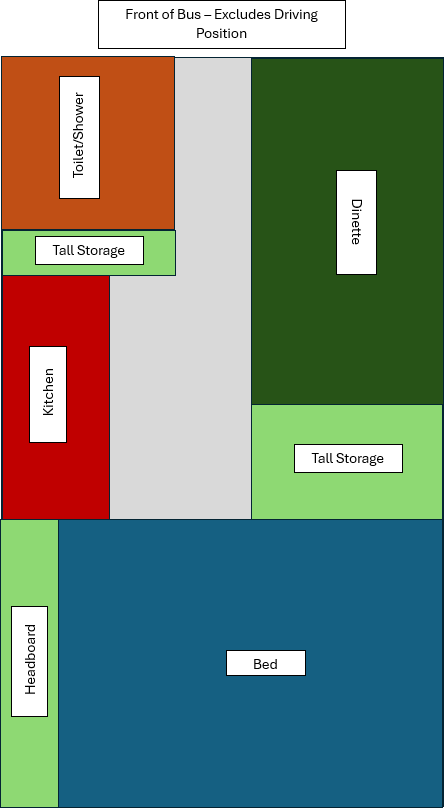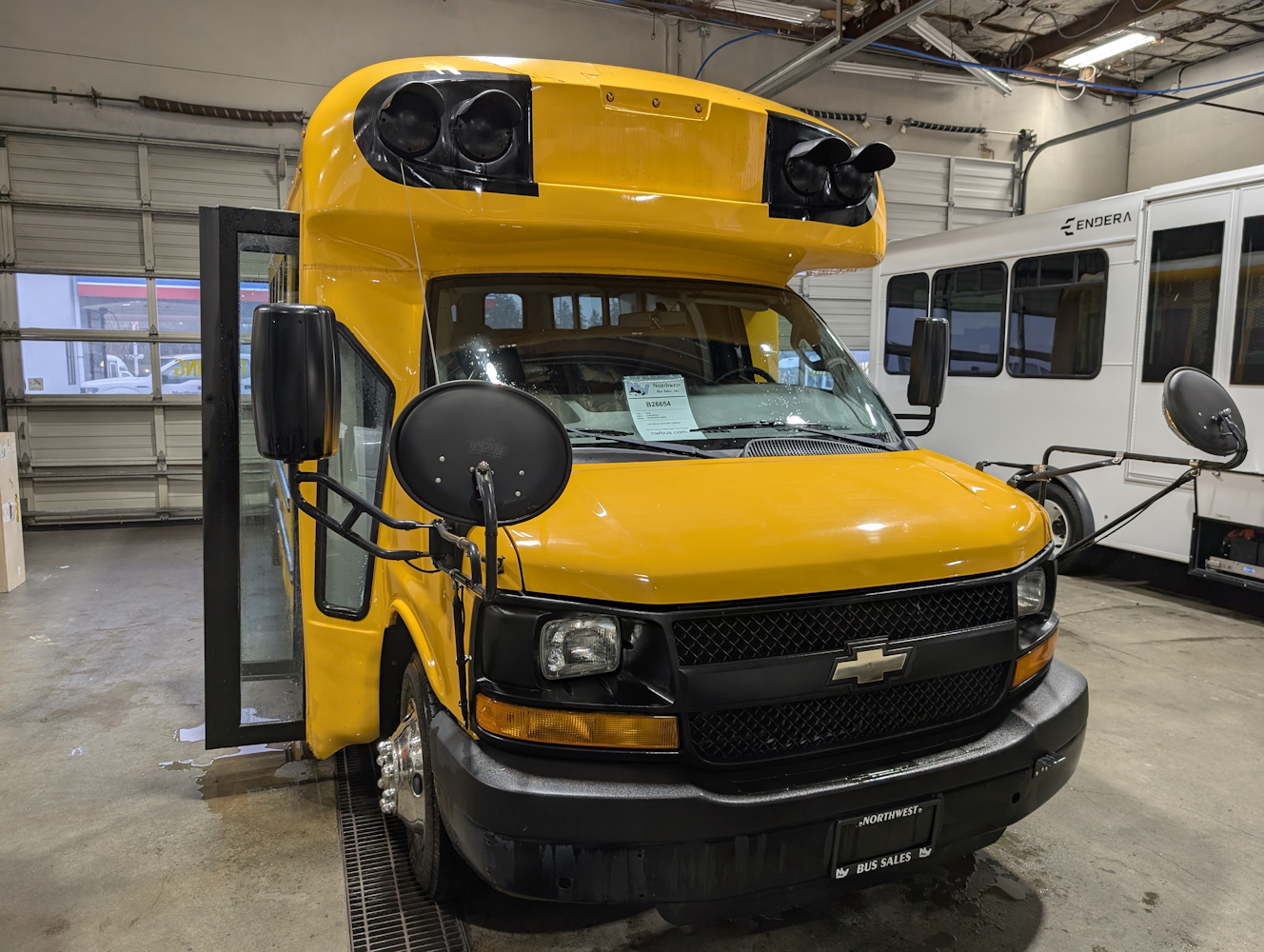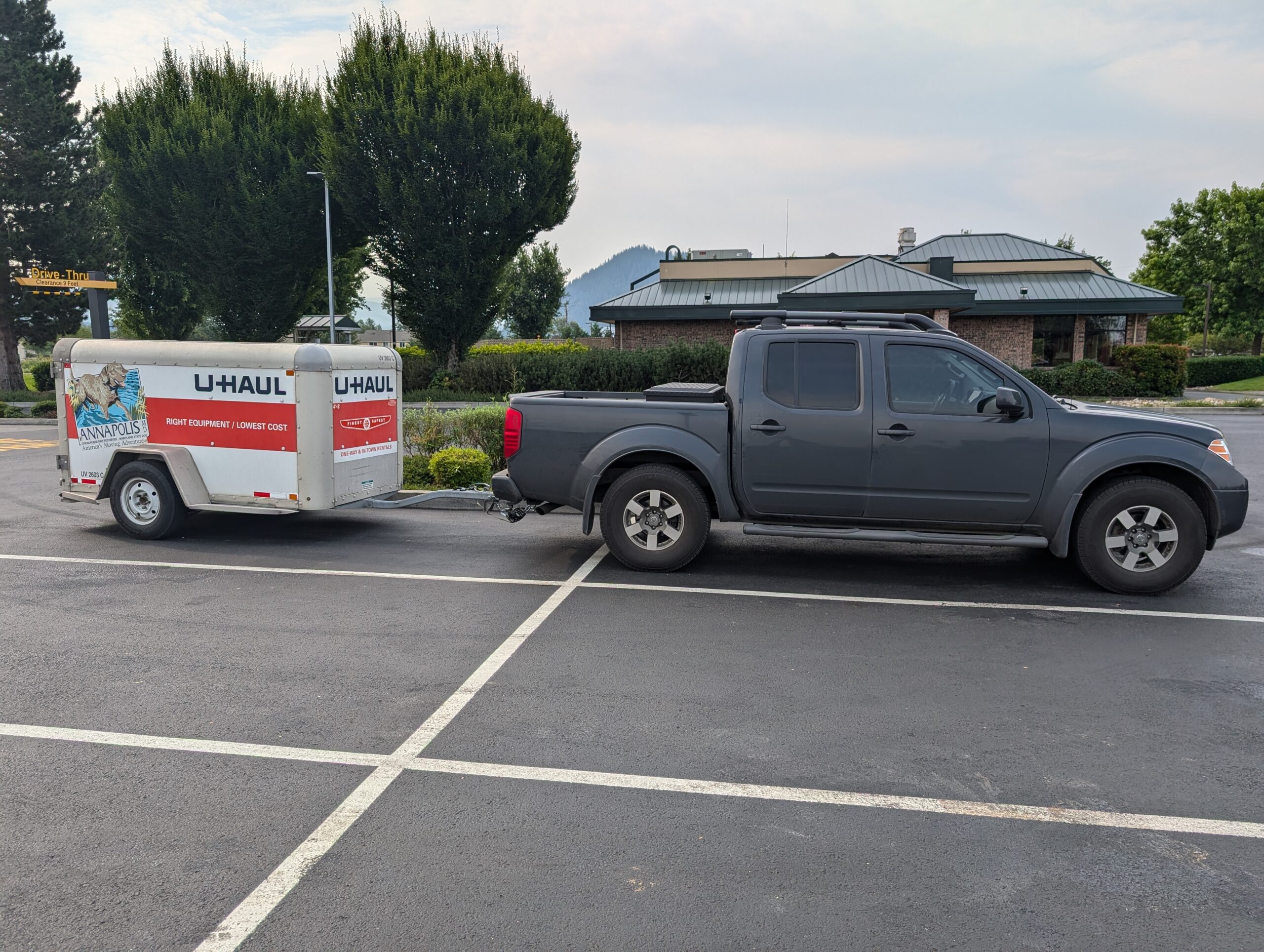Getting Ready to Get Ready
The project is proceeding, albeit at a measured pace. I’ve been watching many YouTube videos concerning bus conversions, closely inspecting the bus for features, and starting basic layout ideas.
As shown below, I have a scale diagram of the potential layout of basic functions within the bus. The major items, the dinette, bed, kitchen, and toilet/shower, are all drawn to scale.

Scale sketch of items to be included in the bus
The bed is queen-sized. The dinette will be big enough to convert into a bed – at least for someone under six-feet tall.
More details need to be fleshed out. For example, the oversized power solution I have planned – where does it live and how is it arranged?
Additionally, the roof utilization needs planning. Where does the rack for the solar cells belong? What about a vent fan? Save space for an RV heat pump.
When the physical work begins, I’ll create YouTube videos to track the progress.


